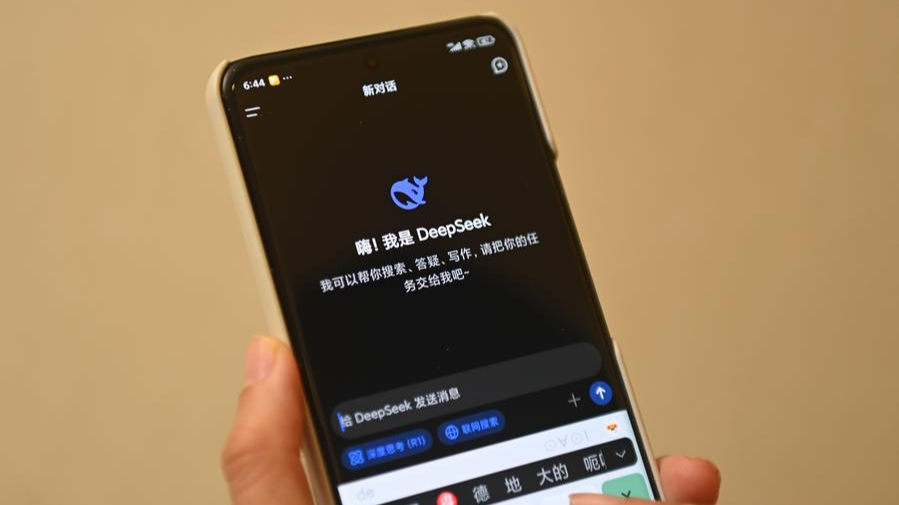
BEIJING - Months after DeepSeek's dazzling debut, China's generative AI firms are still racing with unabated fervor, clear proof that the competition in this sector is still dynamic, with vast innovation potential remaining.
This month, a parade of Chinese AI foundation models dropped major updates. Moving beyond the "chatbot" label, these open-source models are transforming into smart agents engineered to solve complex, real-world problems.
Their sustained emergence, rivaling or even surpassing global top competitors, showcases an enduring creative vitality in China's AI landscape.
READ MORE: Chinese tech firms up ante on open-source AI models
On Monday, Beijing-based Zhipu.AI unveiled GLM-4.5, a versatile and efficient AI platform that natively fuses reasoning, coding and agent capabilities. "The model now creates sophisticated standalone artifacts, ranging from interactive mini-games to physics simulations," read the update posted on Zhipu's official X account.
"Pretty impressed by the results of my initial vibe tests," replied Daniel Vila Suero from Hugging Face, a website where the global AI community collaborates on models, datasets and applications.
US tech media website VentureBeat hailed the GLM-4.5's launch as handing enterprise teams "a truly viable, high-performance foundation model" that allows them balanced "innovation, performance and operational constraints."
In a blog titled "Chinese Progress at the Front," OpenAI researchers noted that Zhipu is "independently building rival models at highly competitive prices."
"By open-sourcing our advances, we're accelerating AI for everyone and fueling worldwide innovation," said Zhipu.AI CEO Zhang Peng.
Last week, Alibaba's AI division released a new update of the Qwen3 reasoning model, which is "smarter, knows more, can do more things and works better on agent tasks," according to the Qwen team.
"This is a small update! Bigger things are coming soon!" the team announced on X.
Another competitive player is Kimi K2, which was released this month by Beijing-based star startup Moonshot AI. This open-source model lets developers skip training from scratch and instead freely use, fine-tune and extend it as they wish.
K2 is "the new best-available open model by a clear margin," Nathan Lambert, a machine-learning researcher at the Allen Institute for AI in Seattle, posted in his newsletter "Interconnects."
When it comes to handling coding tasks, K2 "held its ground, slightly outperforming Claude Sonnet 4 in terms of implementation quality and code response accuracy," according to a real-world test at DEV, an AI developer community. Like OpenAI, Claude is a top-tier proprietary AI model developed in the United States (US).
Shanghai's StepFun and MiniMax have also just unveiled their brand-new models - Step-3 and M1. Step-3 stands out for being capable of being trained on home-grown semiconductors, while M1 employs low-cost training, utilizing just 512 GPUs over three weeks at a total expense of merely $534,700.
Also on Sunday, Shenzhen-based tech titan Tencent debuted HunyuanWorld-1, a model that can instantly conjure a fully immersive, walk-through and fully editable 360-degree virtual world.
The DeepSeek-R1 release earlier this year was more of a prequel than a one-off fluke in the trajectory of AI, said Lambert. A Tsinghua-led team reported Wednesday in Nature Medicine that, as of May 8, DeepSeek-R1 had already been deployed in at least 755 Chinese hospitals.
As of Thursday, the open-source model leaderboard on Hugging Face is topped by GLM-4.5, with Qwen and Tencent in hot pursuit. K2 sits at No 9, while eight of the top ten models hail from China.
"Chinese open AI models are very powerful," commented Bill Gurley from Benchmark, a Silicon Valley venture capital firm, on X. "Each model can improve each other model."
Unveiled within just a few weeks, these Chinese open-source models each carve out a distinct niche in terms of one metric or another.
"Models like DeepSeek, Alibaba, Tencent, MiniMax and Baidu Ernie bot are world-class, developed here and shared openly (and) have spurred AI developments worldwide," said Jensen Huang, Nvidia's founder and CEO, who attended an expo in Beijing this month.
Until now, China has launched 1,509 AI models out of the 3,755 models released worldwide - with China launching more models than any other nation.
READ MORE: China’s AI journey: A chapter in story of human progress
Additionally, China currently hosts 71 of the world's 271 AI unicorns, accounting for roughly 26 percent of the global total, the China Academy of Information and Communications Technology said.
Notably, the Chinese government last week proposed the creation of a global AI cooperation organization to advance tech collaboration worldwide.
"We look forward to China's AI giving back even more to the open-source community - so innovators everywhere can advance together," Du Yulun, a researcher at Moonshot AI, told Xinhua.


